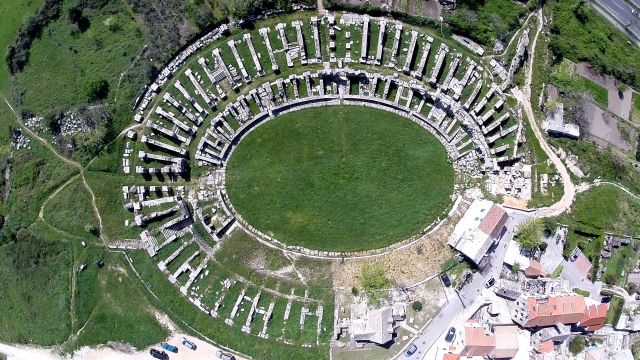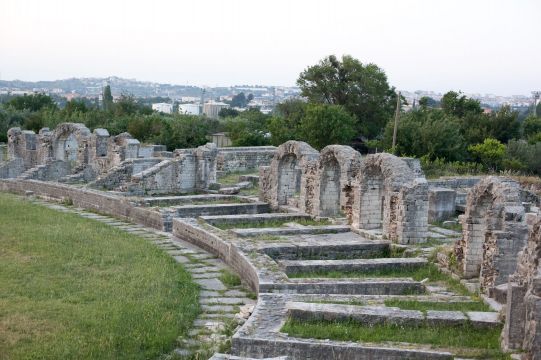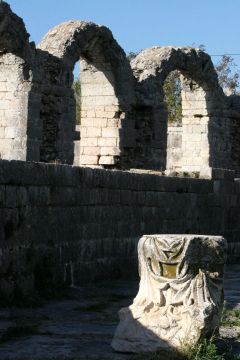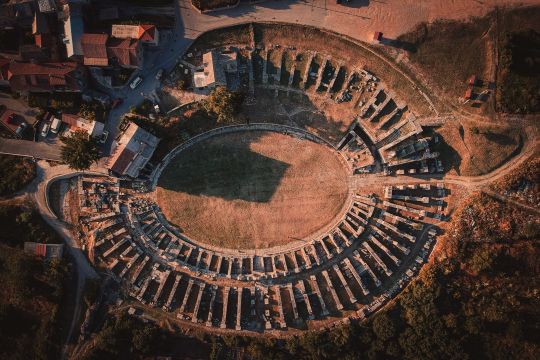At the northwest end of Salona’s town limits, subsequently fortified, there is an amphitheatre, which forms part of the town defence system. Its remains are comparatively well-preserved (much worse than the one in Pula, though), showing the benefits of the well known reconstruction made by the Danish archaeologist Ejnar Dyggve. The first excavations, made in the end of the 1840s, were initiated by F. Carrara, who was also responsible for the first and very systematic archeological research of this town and its archaeological research. In 1850 he published a book on the Salonitan topography and excavations undertaken earlier, which is still very valuable and useful. Excavations of the amphitheatre were continued until much later: before and during the First World War (F. Bulić), and again in 1929 as part of studies of this edifice performed for the purpose of a comprehensive monograph published in 1932 (E. Dyggve). Finally, in the beginning of the 1980s, it was studied by F. Oreb within a conservation works campaign.
Dyggve considers that the amphitheatre was designed by Roman architects who performed similar tasks elsewhere too, and that it was built in the second half of the second century A. D. Today, we can see only the lower parts of its large walls, largely reconstructed in the 1950s. During the Venetian époque, it was intentionally damaged to prevent it from being used by the Turkish units during their war with Venice in the 16th and the 17th centuries. After that, it was used as a quarry from where stone for house building was being taken, like in many other places.
It is believed that it could have accommodated about fifteen thousand, or even more, spectators. In order to enable fast entrance to and evacuation from the auditorium, a double system of communications was designed: radial, as related to the building ellipse, and circular, as related to the levels of the seat rows. Such a system is quite often at large sports’ stadiums of today. Because of its location along the northern and, partly, the western town walls. Its main entrances must have been in the south and the east walls, which is a deviation from the system comprising two entrances in the east – west longitudinal axis. On its northern side, it stood on elevated soil, some of the walls built on marl (still visible) having therefore no foundations, unlike the other sides. On the southern side, and also on parts of the western and eastern sides, it had three floors: two with arcades and the third with rectangular windows.
In the vicinity of the amphitheatre, to its south, there was a cemetery for gladiators killed in the arena. From their epitaphs, we learn their names, origins, homelands and fighting specialities.










